REVIEW: Pokémon Sword and Shield
How is it that a single development team manages to keep the hits coming with virtually every single release? Pokémon has had its good seasons and “bad” seasons, but even those who have sold less than others are still massively successful on a global scale. Coming to meet controversy head-on after being one of the most highly-anticipated entries in the series to date, thanks to being the first mainline titles on a home console, Gamefreak took a massive gamble with making massive cuts to the games’ Pokédex. This caused a fan outrage that the franchise had never really been seen before, and certainly not on this scale. But when push came to shove, the sales spoke for themselves. Breaching over 6 million units sold (not just shipped to retailers; actual copies purchased physically and digitally) in the launch weekend, Pokémon Sword and Pokémon Shield became the fastest-selling and highest-grossing franchise entries to date. This is due to many players who, I imagine like myself, were exceedingly frustrated over Gamefreak’s monster encyclopedia cuts, but trusted enough in the process and the technical aspect of the franchise that we believed we would still receive great games on the whole. Did Gamefreak, despite the controversy and fan backlash, succeed in this Endeavor?
The uncomplicated answer is, yes. The games are rock-solid from a technical perspective and make several improvements for long-time competitive players such as myself while simultaneously improving upon the ease of entry. But I’m getting ahead of myself. Sword and Shield (I played through the former) start much like any Pokémon game that preceded them. You, as the protagonist, live with your mom and have a best friend, Hop, living next door. Hop’s older brother, Leon, is the Galar Pokémon Tournament Champion and is hailed as the “Unbeatable Champ” (until you thrash him at the end of the game, naturally). The story plays out much like most previous entries as well, with someone attempting to harness a power too great for any human being to control, and that causes problems. Where the narrative deviates here is that, unlike the preceding games, there’s no “evil team” to take down while attempting to conquer the Pokémon League (or, rather, Champion Cup Tournament) in the Galar Region. The only team is Team Yell (yes, it sounds stupid, and yes, they look as ridiculous as their name) and they’re just overly zealous fans of one of your fellow Champion Cup tournament challengers, Marnie (certainly a new fan favorite if you spend more than 10 seconds online). The threat comes from the tournament organizer, Chairman Rose, and his associates that follow him, such as Oleana and her Macro Cosmos employees. Even still, this was a case wherein their intentions were mostly good, in that they desired to avert an environmental disaster, but they overcompensated and wound up threatening the safety of the entire region as a result. I found this particular narrative interesting as the region champ, Leon pleads with Rose to look at what is actionable and reasonable in the immediacy to help course-correct, rather than doing something drastic and dangerous to potentially avoid something that’s tens of thousands of years away from even happening. Don’t expect too much from the story beyond this, though; this is Pokémon, not The Witcher, and storytelling has never been the point of the games, though even by series standards it’s pretty light in that regard.
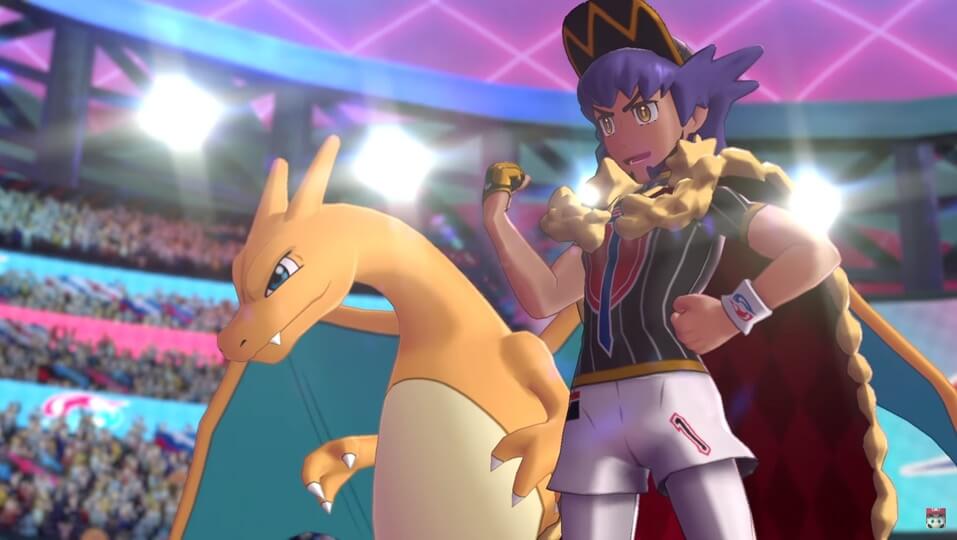
From a graphical standpoint, Pokémon Sword and Shield are nothing to write home about, although they do look clean, especially on a beautiful, big 4K UHD screen. The character models, both human and Pokémon alike, are mostly unchanged from those of the last series outings, Ultra Sun and Ultra Moon. This was one of the criticisms that fans had leading up to the games’ release, as Gamefreak had made it sound as though they had spent years crafting a new engine and character models, and that one of their reasons for cutting the Pokédex down as they did was that it would be too much strain to create new models from scratch for every single pocket monster. The revelation that this was not, in fact, the case, was understandably infuriating, but nonetheless, the games look great for the series. I don’t think that anyone with their head on straight believed that Pokémon Sword and Shield would be a technical achievement or a graphical marvel, but if Gamefreak had spent more time on the engine, to the point where we got truly new models for the characters with higher levels of detail, then I think fans would give them some substantial slack here. The environments aren’t anything groundbreaking on the Nintendo Switch either. The Legend of Zelda: Breath of the Wild was more impressive, and now that we know that Nintendo’s hybrid console can (mostly) run Witcher III: The Wild Hunt, I think it’s safe to say that these games aren’t exactly pushing the envelope of what the Switch can do. But that’s just fine in isolation. Again, if Gamefreak hadn’t acted like they were making these games look like technical marvels, I don’t think it would be an issue; these are more or less the visuals I expected, even if I wanted a bit more from them. What the games do legitimately improve upon visually is the effects of the Pokémon moves. While the attack animations haven’t changed, the accompanying streams of fire, torrents of water, or blasts of electricity do look quite good comparatively.
What of the features new to the games? The Wild Area is a cool concept (although I do wish they had come up with a less generic moniker for it), and it’s almost too easy to lose track of time meandering around the vast landscape early on. It gives Pokémon Sword and Shield a much more traditional JRPG element, as most in the genre tend to have some sprawling area or another that you can grind out leveling up and find monsters that you’ll want to Take Down after you’ve cleared the main game. Pokémon in the Wild Area, and in the rest of the game’s areas for that matter, appear on-screen. Much in the same way that the Pokémon Let’s GO entries did, this allows trainers to be infinitely more selective with the monsters they encounter. While we’re here, for those who didn’t like the removal of battling wild Pokémon, you may sleep soundly, as those have made their return. Catching a monster still results in Exp for your entire party, though slightly less for those of your team who did not participate in the battle. There are still random encounters; however, these can be avoided altogether if you choose, and are quick enough to evade the rustling grass that follows an exclamation point in a given patch. In many cases, these random encounters are a stronger or more uncommon species than you will typically see just strolling around in the open. In addition to the typical day and night cycle determining which Pokémon will appear, weather now plays a part as well. The Wild Area possesses a constantly changing weather pattern, ranging from scorching heat to lightning storms, and all of these affect the Pokémon that spawn, as well as have an immediate effect on the battles themselves.
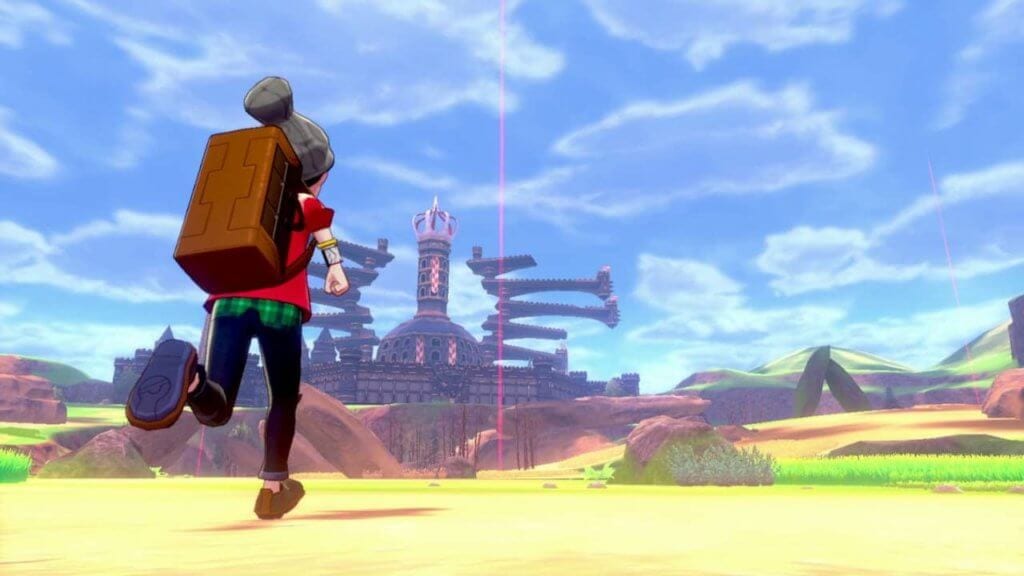
Additionally, there are Pokémon sauntering around outside of the tall grassy patches in the Wild Area. These are usually evolved forms of those you typically encounter in a given location of Pokémon Sword and Shield and are almost always leagues beyond your party’s current levels until late or post-game. While frustrating that there are Pokémon whose Swagger you can only admire from a safe distance for your first several passes through the area, it does give you something to shoot for, and I found myself making mental notes of all the spots where I had found a powerful monster that I was locked out of facing and catching until I had progressed far enough. New to the franchise is a cap of sorts on how high a level of Pokémon you can capture until you’ve procured the requisite number of gym badges (I say “badges” out of habit, while in these new games they’re really much more akin to shards of a medallion, but the same rule applies). At first, I thought I would be immensely annoyed by this change, but it made sense in practice; after all, is my level 30-something team genuinely prepared to take on a level 60+ Haxorus or Snorlax? The answer is: not even remotely close to it. So I made my notes to backtrack once my team was better equipped. The Wild Area presents many other features as well, including large berry trees that you can shake to obtain their fruits. The amount and types of berries you acquire are randomized, and if you shake it too many times, a Pokémon will drop on you from the branches, beginning an encounter. Regardless of whether you KO or catch the monster, most of the berries you had shaken off the tree will have been gobbled up by nearby wild Pokémon who decided to help themselves to the fruits of your labor (yes, I have a disease).
One of the Pokémon Sword and Shield’s more significant new features, however, comes in the form of Max Raid Battles. These battles involve either finding a den with a towering red light shining up from it or throwing Wishing Stars into one that isn’t already aglow. Either way, once you dive into the den, you’ll be able to take on a Dynamaxed Pokémon either with NPC trainers or other players via WiFi connectivity and given the opportunity to capture it at the end. The hitch is that you only have a handful of turns to attempt this before the storm of Dynamax energy blows you back outside. This feature is the only way to get monsters with unique Gigantamax forms (some of which are, admittedly, incredibly cool); otherwise, when you Dynamax a Pokémon of that species, it just grows larger. My general thoughts on the Dynamax mechanic are that I’m not a huge fan of it. While its competitive utility remains to be fully fleshed out, just adding a ton of bulk to a monster and giving them some powerful moves for a few turns doesn’t light nearly as much excitement in me as Mega Evolutions or Z-Moves did in prior generations. Time will tell if this changes, but my preliminary musings are more or less that of unimpressed. Beyond the Max Raid Battles, the Wild Area has several characters of interest that you can spend acquired Watts at to get items such as specialized Poké Balls, cooking ingredients for the games’ new Curry Dex feature (more on this in a moment), or Technical Record moves. Technical Record moves (or TR for short) are essentially like the TMs of the past when they were all single-use items (which encouraged no shortage of game exploits). These are acquired either through exchanging Watts at one of the aforementioned trainers in the Wild Area or as drop rewards upon completion of a Max Raid Battle. TRs are another feature of which I am no fan. While there are still many traditional TMs that can be picked up in the region or purchased at a Poké Mart, a high percentage of the best and most useful competitive moves have been relegated to these new TRs, essentially randomizing your ability to obtain the moves necessary for a given moveset. As a competitive player myself for years, this is unbelievably annoying, and, as in the past, this will undoubtedly encourage cheat devices and exploits in short order.
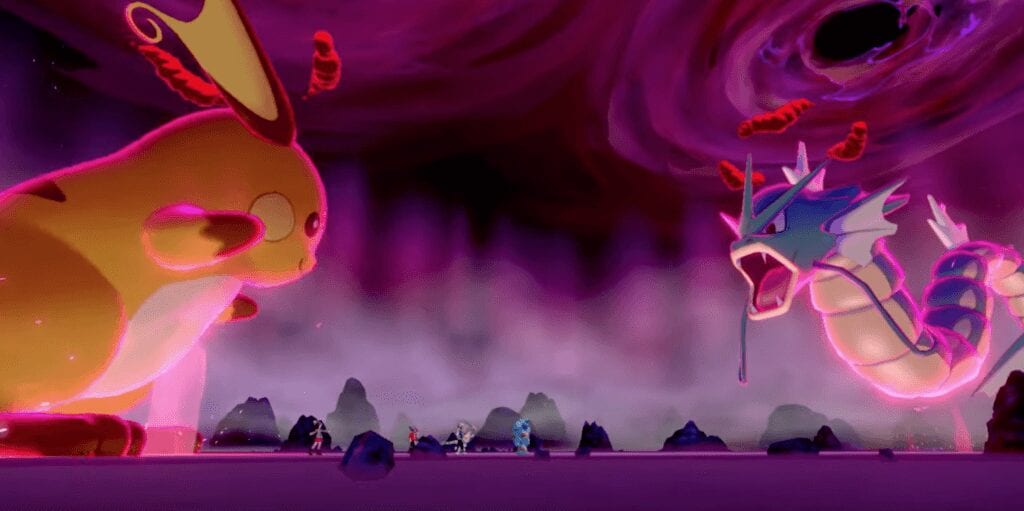
Although Gamefreak made some things a tremendous pain in the posterior, there are other things still that they made infinitely easier, such as the Move Tutor. In the past, players typically had to acquire a ton of some uncommon or rare item to trade to an NPC character who would then allow you to teach one Pokémon a single move that they had known previously or could only be learned through this recall process. Without the use of an exploit or cheat device, this was a time-consuming and arduous process. However, now players may go inside any given Pokémon Center and go to the man behind the left-hand counter and teach any Pokémon their moves an unlimited number of times free of charge. Additionally, whereas in the past, trainers would have to breed for a specific-natured monster, there are now various Mint items that allow them to immediately change the nature of the Pokémon to the one that corresponds with that mint. Although this may seem paltry to competitive players who have been breeding since the womb, it is a welcome convenience to those who rushed to grab their starter Pokémon or catch their version of the game’s legendary and didn’t want to soft reset ad nauseum for the perfect nature. The Wild Area, as well as other routes in Pokémon Sword and Shield, bring the ability to set up camps. Here, you have access to a host of new features, such as playing with your Pokémon (this effectively replaces the Poké Refresh and Pokémon Amie features of the two previous generations). You may also now have your entire party of six out in the camp, as opposed to previously being limited to interacting with one at a time. Your partners can communicate with one another, as well as with Pokémon in other trainers’ camps you can visit. While camped, wild Pokémon might show up and bring with them various useful items, as well as join your party, and this includes some extremely rare species. Another new feature while camping is the new cooking minigame. You may cook various forms of curry for your Pokémon, with a wide array of effects, such as temporarily boosting Exp gains, restoring health, and increasing friendship level, which is useful for those moves whose power is determined by it or for evolving those species who must be at max friendship, such as Riolu or to get Eevee to evolve into Espeon or Umbreon.
Trainer customization is back in Pokémon Sword and Shield, with a more significant number of clothing items to choose from. However, the caveat to this is that while, technically, yes, there are more items, most of them are just differently colored versions of the same thing, and we’ve yet to truly get substantial customization in these games. Additionally, many of the articles of clothing are unreasonably expensive and not worth their price tag, unless you’ve reached a great place to farm money in-game. Your “unique” trainer look will be displayed on your League Card, which you may share online with other players. The League Card feature is meant to function as a trading card set of sorts, with you collecting those of the various gym leaders, your rivals, and the like, but it’s not nearly substantive enough to feel like anything other than a brief distraction. The ability to add various forms of holofoil elements to your own card is nifty enough, but with a pretty sparse selection of backgrounds and frames to choose from, these shiny cards lose their luster quickly, and I saw no need or point to spending more than five minutes on it myself. Your custom card will be displayed at the start of any online battles with other players around the globe, but that’s pretty much the extent of it.
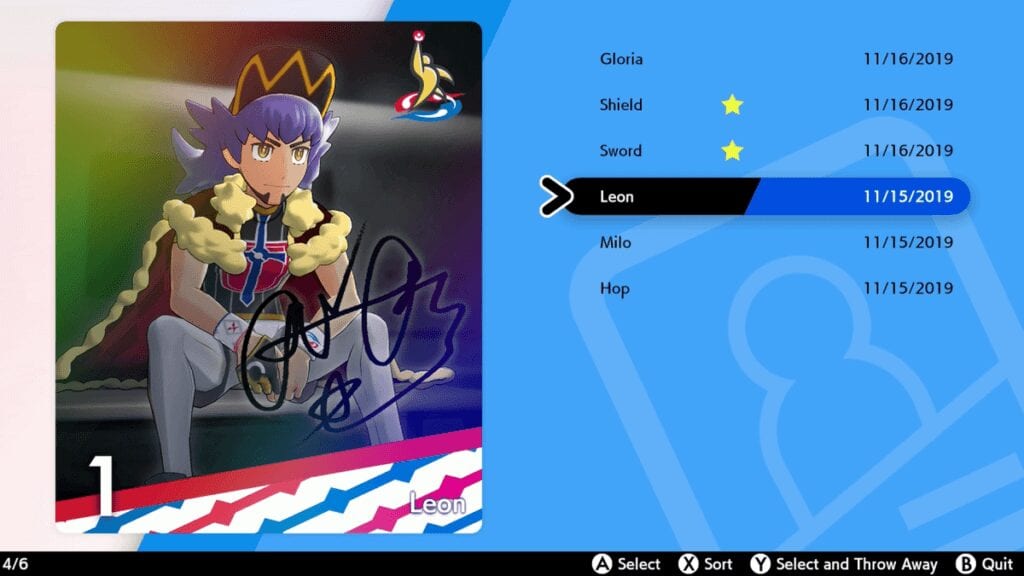
On the topic of WiFi battles, players can choose from either Casual or Ranked matches, as is pretty standard for any game with an online multiplayer facet at this point. Casual events can be an excellent place to start for players new to the games or those who are returning after an extended hiatus. Many players in the Casual matches use their in-game teams (those which they primarily played through the central story portion with) or some slight variation thereof. Casual games also allow players to use special Pokémon, and that includes the games’ cover legends, Zacian and Zamazenta, so be prepared to run into a host of teams with one or more of those in the back end. Ranked matches, naturally, are far more restricted, and you’ll see no signs of the sword and shield-bearing legendary z-wolves. This is where you’ll compete against players who are either long-time online competitors in the WiFi battle scene, or those looking to prep for the official Video Game Championship season. There’s no better way to better yourself than to play against those better than you, but you may want to get some practice in before you’re willing to have your team entirely wiped by a veteran player. Should you and your group of friends come up with exciting teams that you’d like to try out, you may rent each other’s squads and use them as presets online.
Pokémon Sword and Pokémon Shield have a lot going for them. Mechanically they’re the best the franchise has seen, and the various quality of life improvements that Gamefreak made are a boon to veteran and new trainers alike. But Sword and Shield’s shortcomings are not in the presentation of already-existing features, but rather on those that are unique to this new generation. The Wild Area was great conceptually, and it’s still good, with a host of mini-features sprinkled throughout, but it feels unfinished. Gamefreak had described this as a sprawling expanse of an area, and while I don’t think anyone was expecting an open field on the level of The Elder Scrolls or The Witcher franchises, it is still measurably smaller than I was expecting. The Galar region, as a whole, actually feels quite small, perhaps smaller than any region that has preceded it. Dynamax is still pretty subpar as generation gimmicks go; far too few Pokémon have a unique Gigantamax form to make it aesthetically exciting, and just from a base concept, making my Pokémon the size of a skyscraper doesn’t interest me in the slightest. A large number of the new Pokémon do have excellent designs, some of the best the franchise has seen in a long time, and most of the Galarian forms of existing monsters are great as well, but the Pokédex is still left wanting for more – a whole lot more. Having dumped well over 50 hours into Pokémon Sword, I can confidently say that I don’t buy the developer’s justification for cutting so many monsters out of it. The game, despite being on a large console now, feels small, and certainly far too small to use size as an excuse for cutting content. Gamefreak touted Pokémon Sword and Shield as game-changers for the franchise, but with a handful of exceptions, it’s more of the same. That’s not entirely a bash either, as the things that they brought forward and improved upon from prior generations hold their place well. But those that were supposed to set these games apart instead hold them back. Again, the games are technically sound and play as a Pokémon game ought to, but I’m not seeing the innovation that Gamefreak lauded themselves for, and I’m not enthralled with a few of the new features either. Did I enjoy the game? Absolutely. Is it a good Pokémon game? Without question. But did it live up to the hype that Gamefreak (not the fans) was building it up to have? To that, I’d have to say no, and that holds it back from excellence.
Pokemon Sword and Shield
Gameplay - 9.5
Difficulty - 8
Story - 7
Graphics - 7.5
Sound Design - 8.5
8.1
Good
Gamefreak touted Pokémon Sword and Shield as game-changers for the franchise, but with a few exceptions, it’s more of the same. That’s not entirely a bash either, as the things that they brought forward and improved upon from prior generations hold their place well, but those that were supposed to set these games apart instead hold them back. The games are technically sound and play as a Pokémon game ought to, but I’m not seeing the innovation that Gamefreak lauded themselves for. Did I enjoy the game? Absolutely. Is it a good Pokémon game? Without question. But did it live up to the hype that Gamefreak (not the fans) was building it up to have? To that, I’d have to say no, and that holds it back from excellence.
Comments (10)

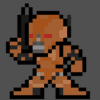
For all it’s faults I have put in 700 hours by now and the quality of life improvements really puts a magnifying glass on the old versions when I play them. If the Expansion pass comes through It will be up there with Emerald, Platinum, and Black 2/White 2.
Needs more paragraphs and spaces imo to really let the text breath, as it stands it feels too concentrated into walls of text which makes the reading harder imo.

Are you reading on a desktop or mobile? I’d be curious to know. Thanks for taking the time to look!
Hello Andrew !
PC if memory serves me right, and I also apologize if my comment sounded like I was just being a jerk, that’ll teach me to write stuff during the night instead of sleeping !
Simply wanted to provide some advise for future articles, I genuinely meant no offense by it !
Take care !

Don’t sweat it one bit. Sometimes the spacing formatting doesn’t translate properly from MS Word to our site’s back end, and then again from that to the finished posting. I appreciate the bring-up!
Great review! Thanks for taking the time it is greatly appreciated.

Of course, and thank you for taking the time to read it. I hope it was informative!

Awesome review. Very detailed in every aspect of the game, extra points too for honesty about the controversies surrounding the game’s release.
About the review’s visual aspects I’d like to point out as someone before me that the text feels dense in some parts, I’m reading on PC and maybe a bit more spacing between parragraphs would help. There’s a whole vertical empty space on the right of the page while scrolling down too, left there from the Recent Posts column space. Just an idea (and btw Idk how that would work overall) but I maybe move to an horizontal space either at the very top or the bottom of the review? That way you could have better use of the page’s space and wouldn’t feel so saturated. Again, just an idea.
Keep up the awesome work you guys!

I appreciate the praise and feedback. There are times when the formatting doesn’t translate the same from one form to another (MS Word to our dashboard and then to the finished post), so it simply requires a jump back into our site’s back end to rectify. Thanks again!








I wanted to buy a nintendo switch with a new pokemon game, imma 1991 kid – so pokemon and digimon never gets out dated. For real for real. But i read that the rooster and story aint that up there yet. So i went for pokemon sun, ultra moon and omega ruby lol with nintendo XL 3ds xD